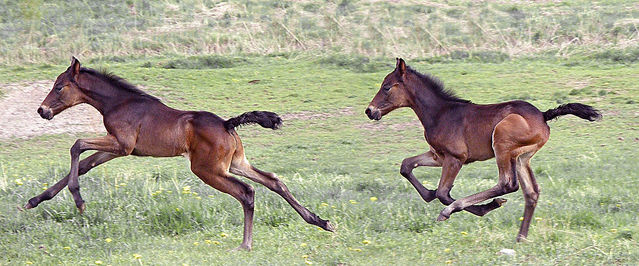Creativity
Speeding Up Your Creativity by Slowing Down
How to use examples for creative inspiration
Posted April 9, 2017

Suppose you are searching for a new approach to a pesky but important creative problem. You're casting about for any sort of hint, or even the whisper of a hint, as to what you might do.
Scrounging about on the internet one morning you come across an unfamiliar but somehow arresting abstract line-drawing. Intently looking at the strange drawing, and not even sure of what the image means, you suddenly decide to copy it. With pencil in hand, you set to work, looking up and back at the unfamiliar drawing again and again, trying your best to faithfully and accurately reproduce the image on the sketching paper in front of you.
Would this intense copying exercise help you with your creative problem? Or would it, instead, get in the way, obstructing you from making any creative headway? Could copying an unfamiliar drawing help your own subsequent creative generation? Or might it, instead, dampen your creative insight and expressiveness?
Tackling just this question, two researchers at the University of Tokyo recently found that copying an unfamiliar art work significantly enhanced the subsequent independent creative drawing of participants.
Students (undergraduates with no professional art training) were divided into two groups. One group was asked to generate their own original and creative drawings based on real objects, specially placed in the room, such as a seashell or a potted plant. They did this twice, on separate days, producing two drawings. The second group was asked instead to first carefully copy an abstract drawing of a seashell or a potted plant. Then, on the second day, like the first group, they were asked to generate their own original and creative drawings based on real objects in the room.
The second "copying" group achieved results that were rated by two independent experts as more creative. The final drawings from the copying group were judged as higher in novelty, greater in aesthetic appeal, and as expressing more individuality than those of students who hadn't had any experience with copying.
And this wasn't just a one-time fluke finding. A similar significant enhancement of subsequent creative drawing was observed when other groups of students were asked to copy an unfamiliar semi-abstract drawing –– but it didn't work when they copied a highly realistic drawing.
So was it just the copying that boosted their creativity, or is there something more to the story? Consider what happened when yet another group of students in the study was not given any copying task, but was given about the same amount of time (approximately 20 minutes) to look at the same abstract drawing of a potted plant or seashell. They were asked to carefully view the drawing while thinking about what parts of the objects the artist paid attention to, and what the artist wanted to express with the drawing. This "looking long and carefully" group also showed a jump in creativity.
Why might this be?
Why did the act of copying (or spending time attentively looking) at another artist's abstract or semi-abstract drawing help bolster the students' own later originality and expressiveness?
A clue is provided from what the participants said as they drew (an analysis of their transcribed "think-aloud" protocols) and also from retrospective interviews that were conducted with the participants afterwards. The no-copying group was mainly focused on trying to capture the shape of the objects realistically. But the copy group had more varied and encompassing aims, such as trying to depict the liveliness of the object or its texture, or the way it made them feel.
These findings suggest that the experience of trying to copy the unfamiliar abstract drawing changed the students' mental conception of what drawing is about. It expanded their understanding of what it is to draw.
But wait!
Now whoa up there! Haven't we often heard that looking at and encountering examples can have the opposite effect on our creative aspirations? Doesn't much of the research on "design fixation" point rather to the narrowing and constricting effects of being given examples before a creatively imaginative endeavor? Isn't it known that examples are bad for innovative thinking?
Ah, yes: The question of when and if looking at examples will help our own creative processes is complicated. True, there's the looming possibility of "design fixation" but there's a counter and more optimistic possibility of "design inspiration." It's unlikely that there's a simple hard and fast rule that fits all cases.
Although many factors may be at play, one important aspect that may reconcile some of these studies has to do with how closely and deeply we explore an example, and the unfamiliarity of the example. In many of the laboratory studies showing design fixation, the examples are presented quite briefly –– often for just 1 or 2 minutes, and many studies use commonplace examples. In contrast, in the University of Tokyo drawing study, the students who copied the abstract unfamiliar drawing spent on average about 20 minutes copying the images.
Creativity through "slowing down"
Looking and observing closely, giving ourselves the space, time, and permission to really look seems to be a key active ingredient in allowing us to generate ideas that reach higher in novelty, appeal, and individuality.
This emphasis on observing closely intersects nicely with what we know about how best to introduce desirable variations into our actions and thinking. It can be good to switch it up. How can we better introduce productive variability into our creative processes? As we say in Innovating Minds: Rethinking Creativity to Inspire Change:
"One simple approach is to slow down. Our habits and well-learned routines are performed quickly and with little effort. Deliberate variation may require a wider margin or greater leeway in time and space. Given some extra time, sometimes even just a few seconds or minutes, new alternative approaches or classifications can emerge. Sometimes we make sudden habitual judgments that, given only a moment’s reflection, would seem ungenerous or unduly narrow." (p. 155)
To think about:
- Are you flipping through examples too quickly? Should you slow down and more deeply absorb the richness and detail of just one or a few unfamiliar examples?
- What is the best pace for your exploration?
- Are there contexts in which trying first to do (copy) what someone else has done would be a fine stretching tool for you –– indirectly and paradoxically expanding your unique skills for noticing and expressing your own ideas?
- Are you sure you're choosing examples that are at the right level of abstraction? Are your examples unfamiliar enough? Do they challenge you enough? Do they leave ample room for interpretation and input from you?




